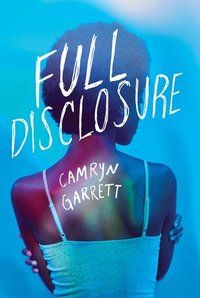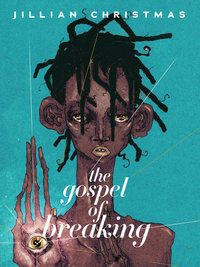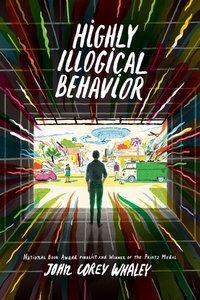With a socially distant, insert-event-cancellation-notice-here Pride month this year, it has become more important than ever for the queer community to connect with each other. If community isn’t your thing or an option for you, this summer is the perfect opportunity to reconnect with that part of yourself that dances somewhere along the rainbow flag.
For most of us, books are the one place in the world we find ourselves. I don’t know how to confront my queerness externally, because I’m hampered by anxiety, but I can explore it internally, through books and essays. My confidence and my ability to be openly gay wherever I am are growing, but for many people it’s a process that starts internally and takes a long time to see the light. Books are perfect for self-exploration, especially when what you’re digging into is embarrassing, awkward, or frightening. A good queer book lets you be you, on the inside, with no pressure to reveal anything on the surface. Getting to know aspects of your identity, like queerness, starts with you, not the rest of the world. So why not books?
And despite the pandemic—even because of it—there has never been a better time to delve into queer literature. Whether that’s books, comics, poetry, or essays, whether it’s queer fiction, memoir, or the work of a queer author, or whether you’re queer, know someone who is, or just want more diversity in your reading. Pride might have been canceled, but no one told the bookworms! Have a look at what Book Riot’s queer contributors have been reading. You’re sure to find something fantastic to add to your TBR. I hope you have a great Pride-at-home full of rainbow drinks and the queerest books you can get your hands on.
Mel Ashford says:
Better Off Red was the first lesbian romance I read that actually felt like two women who were into each other; like it was written for real lesbians, and not just some token F/F stuff. It was also kind of refreshing as a vampire story. I’d also have to recommend Why Be Happy When You Could Be Normal? by Jeanette Winterson, or really, anything by Jeanette Winterson will always have a special place in my heart. Her books are still on my TBR, due to fear of the feels, but ever since I heard about the struggle she had with her mother over her sexuality, I’ve felt drawn to her. I’ve never had those kinds of experiences, but I am naturally drawn to people who have struggled in life. The latest lesbian book I’m obsessed with is Kabi Nagata’s My Lesbian Experience of Loneliness. I’m really into adult comics lately, so this looks perfect.
Mel is demisexual/lesbian.
Susie Dumond says:
Every Pride month, I look for new, diverse LGBTQ voices to read and celebrate. Reading books with lesbian protagonists was so important for learning about who I am, and learning about other identities within the LGBTQ community through books is incredibly important. This year, I’m most excited to read Henna Wars by Book Riot’s own Adiba Jaigirdar! It’s a romcom about two girls with rival henna businesses. There are lots of moving, powerful books about queer pain and suffering, but it’s just as important that we read about and celebrate queer joy.
Susie is lesbian/queer.
Chris M. Arnone says:
I’ve been intersex since I was born, but only thought of it as a birth defect until about two years ago. Since then, I’ve become more aware of intersex invisibility, even when people say “LGBTQ” and leave off the “IA.” Finding my story or anything like my story in books has been difficult, and intersex is such a broad umbrella, representation is hard to come by even in those books. So I’m writing about it, but I’m still searching for great stories and poems on intersex experiences.
Chris is intersex male.
 Leah Rachel von Essen says:
Leah Rachel von Essen says:
I’m always finding books that I wish I’d had when I was a queer teenager. Back then, I was convinced that I was straight mostly because I felt I didn’t have enough “proof” of being queer. Camryn Garrett’s Full Disclosure has a bi protagonist who knows she’s bi even though she has no “evidence”; Jenn Shapland talks about feelings of invisibility as a young queer teen in her memoir. More and more realistic, subtle books are emerging about queer teens that I wish I’d read at 15, and it fills me with about equal parts heartache and hope.
Leah is panromantic and demisexual.
Caitlin Hobbs says:
I grew up living in subtext. Even with a librarian mother who actively tried to have a diverse library, my access to people who thought like me or felt like me was slim to none. Those types of books were hard to find in a smallish town in Georgia in the late 1990s to early 2000s. It’s probably why I love fairytales and mythology so much, with glamours and changing shape and the idea of being Different. Looking at what queer kids have to read today fills me with so much joy. Seeing books like Jen Wang’s The Prince and the Dressmaker exist, books like Most Ardently by Susan Mesler-Evans written for teens to see themselves existing on page is deeply beautiful. It makes me wish I could go to my younger self, hand them a book, and say “look, look, you don’t have to look for the secret words anymore. You’re here.”
Caitlin is queer/bisexual and nonbinary.
 Casey Stepaniuk says:
Casey Stepaniuk says:
My first love and the theme of my blog (Casey the Canadian Lesbrarian) is queer Canadian books, though, so I’d like to highlight the amazing work some of my favorites are doing. My top queer Canadian books published this year are The Subtweet by Vivek Shraya (about the formation and implosion of a friendship between Neela and Rukmini, two South Asian Canadian women musicians), My Art is Killing Me and Other Poems by Amber Dawn (about the burden and joys of writing as a woman, queer person, survivor, and sex worker), Polar Vortex by Shani Mootoo (a psychological thriller investigating mainstream (white) discourse about queer sexuality and identity, longterm queer relationships, and more); and The Gospel of Breaking by Jillian Christmas (alternately sad, sexy, funny, and angry poems about religion, Blackness, depression, suicide, break ups, home and place, love, writing, and white feminism).
Casey Stepaniuk is bisexual, queer.
Sheila Loesch says:
Alison Bechdel might be the closest person I have to an idol. I read her graphic memoir, Fun Home, as required reading in college and haven’t been the same since. Before then I had never identified with a queer character, real or fictional, on the page, so it stands out. Soon I become familiar with her fictional comic series, Dykes to Watch Out For, which is filled with even more awesome intersectional feminist icons. I’ll always love Bechdel’s books for introducing me to queer characters who I can see myself reflected in.
Sheila is queer/lesbian.
 Jeffrey Davies says:
Jeffrey Davies says:
Growing up, the only LGBTQ narratives that I had the chance to experience were those that always had the queer character suffering because of who they were. In high school, as a result of being bullied and assigned a label before I could figure it out for myself, I often avoided books that were enjoyed by people my age, because I’d felt rejected by my age group and by my generation. It was only once I turned 18 that I started to feel comfortable exploring books where I might find myself represented, and even now as an adult, young adult books are generally the only place where I find relatable narratives as a gay man. Some queer books without too much suffering that I always recommend are Nina LaCour & David Levithan’s You Know Me Well, John Corey Whaley’s Highly Illogical Behavior, and Adam Silvera’s History is All You Left Me.
Jeffrey is gay/queer.
Looking for more fantastic queer books? Check out 31 Queer Books With Happy Endings or why not start your own Queer Book Club?









